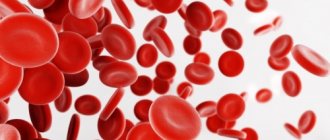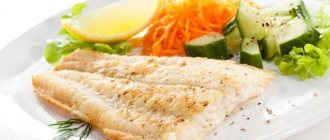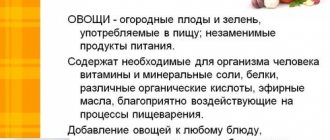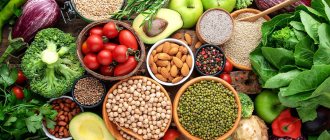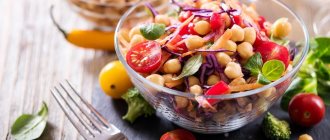A cholesterol-lowering or hypocholesterolemic diet is usually prescribed for medical purposes in order to significantly lower blood cholesterol levels. And as an addition, you can lose a few extra pounds. This diet was developed with the help of cardiologists, since increased cholesterol can lead to various cardiovascular diseases and atherosclerosis. The risk of developing a heart attack and coronary heart disease increases significantly. The fact is that hypercholesterolemia can also be a hereditary disease, and as a rule, a diet has been specially developed for such people that will help reduce the level of bad cholesterol in the blood.
The essence of the hypocholesterol diet
In fact, cholesterol is an important product that is produced in the liver and serves many vital functions of the body. But increasing its level can lead to adverse consequences: atherosclerotic plaques appear, which are deposited in the blood vessels, thereby causing blockage of the arteries. And that, in turn, already affects the appearance of other terrible cardiovascular diseases.
Content:
- The essence of the hypocholesterol diet
- Basic rules of the hypocholesterol diet
- Prohibited Products
- Authorized Products
- Menu for a week with a hypocholesterolemic diet
- Recipes for a hypocholesterol diet
- Contraindications and harms of a hypocholesterol diet
- Results of a hypocholesterol diet
- conclusions
Lately, the problem of high cholesterol has been a concern for many people, as modern life makes its own adjustments to people’s diet and lifestyle. Doctors attribute this primarily to the increased content of “bad” fats in our diet. But it’s true, not many people are able to pass by such delicious-smelling fast foods and fast food chains. And also with regular consumption of alcoholic beverages, smoking, excess weight, hereditary factors and, of course, a sedentary lifestyle.
At its core, the hypocholesterol diet is aimed at reducing the consumption of foods that contain high levels of cholesterol. There are immutable rules of this diet, the observance of which will not only normalize cholesterol levels in the body, but also lose excess weight and radically change your lifestyle, thereby helping to improve your overall well-being.
Diet "table No. 10"
Table No. 10 is prescribed for patients with hypertension and other cardiovascular diseases. It is also followed by people at risk (hereditary predisposition). The diet builds proper metabolism. Its principle is based on protecting the body from the accumulation of excess cholesterol and saturating it with all useful elements. The salt content in the menu is kept to a minimum. Sugar is used in limited quantities.
The coefficient used (proteins/fats/carbohydrates) is calculated depending on the patient’s weight. When compiling a menu, its individual characteristics and reactions to all components of the diet are taken into account. The diet resembles a children's menu. It completely excludes spicy, smoked, fried, salty dishes. The main emphasis is on high protein content. Their function in the body is construction. With the help of the synthesis of these elements, vital processes are carried out in all organs.
Depending on a person’s weight, the following daily norms are prescribed:
- For a patient with normal height-to-weight ratio:
- easily digestible carbohydrates - 400 g;
- vegetable and animal proteins - 100 g (50/50);
- fats - 80 g.
The calorie content of this diet is 2650 kcal.
It is difficult to meet a representative of the fair sex who is not familiar with the phrase “they often drag their feet.” Women's legs really require special attention, and caring for them begins with identifying the causes of discomfort and competent medical diagnosis. Read more in the article: “women’s legs are pulled.”
For an obese person:
- carbohydrates - 300 g;
- proteins - 80 g;
- fats - 70 g.
The calorie content of the daily menu is 2200 kcal. In both cases, meals are provided in fractions - in 4-5 meals (small portions).
Basic rules of the hypocholesterol diet
In order for the results of a hypocholesterol diet to be pleasing, it is necessary to follow the basic rules, any violation of which will only worsen the general condition and will minimize all efforts.
Here is a list of these recommendations:
- avoidance of harmful animal fats, or reducing their consumption to a minimum;
- mandatory consumption of fish, except fried fish, about twice a week;
- replace fatty meat with more dietary meat: turkey, chicken, rabbit or veal;
- Alcoholic drinks are strictly prohibited;
- excluding flour and sweet foods from the diet, or reducing their consumption to a minimum;
- use of vegetable dishes, fruits and low-fat dairy products in the daily menu;
- using stewed or boiled food instead of fried;
- a categorical ban on the use of mayonnaise, replacing it with lemon juice and spices;
- Cool meat broth before use and skim off the top layer of fat;
- It is advisable to cook the bird without fat and skin.
Prohibited Products
Prohibited foods on a hypocholesterol diet include:
- various types of sausages, sausages, small sausages, smoked meats;
- fatty meats, offal, as well as duck or goose meat;
- egg yolks, heavy cream, sour cream and cottage cheese, condensed milk and processed cheese;
- butter, coconut, palm oil, lard, animal fats and hard margarine;
- canned fish and other preserves;
- various nuts (peanuts, pistachios, hazelnuts), chips, candied fruits and French fries;
- baked goods, biscuits, rolls, cakes and other confectionery products;
- all types of sugar, chocolate, sweets, as well as marshmallows and marmalade;
- alcohol, strong coffee with cream and cocoa.
The basis of diabetes treatment is diet and treatment regimen.
Features of nutrition in diabetes mellitus
Long-term observations of patients with diabetes mellitus have shown that strict adherence to a special diet and nutritional regimen is of paramount, sometimes decisive importance for the successful treatment of the disease, the prevention of complications, and the preservation of performance. Diet and nutrition are mandatory for all patients with diabetes, regardless of the form of the disease (mild, moderate, severe), types and methods of treatment.
A diabetic patient must understand and know well that any treatment, including insulin therapy, will only be effective with proper nutrition.
The diet should be tailored for each patient individually, depending on body weight, age, physical activity, and taking into account whether he needs to lose weight or gain weight. The main goal of a diabetic diet is to maintain blood sugar levels within healthy levels, as well as blood fat and cholesterol levels. It is important that the diet is varied and contains a sufficient amount of essential nutrients - proteins, mineral salts and vitamins. At the same time, it must provide such an amount of energy that the patient’s body weight approaches the ideal and is maintained at this level for a long time. The diet must comply with the principles of rational nutrition.
Recommended products for diabetics:
- rye bread, wheat bread, protein-bran bread, non-bread flour products
- lean meats, fish and poultry
- low fat milk and dairy products
- cereals (buckwheat, barley, millet, oatmeal, pearl barley), legumes
- fresh vegetables, fruits and berries of sweet and sour varieties
Excluded foods and dishes:
- pastry products
- strong and fatty broths
- meat and chicken fats
- fatty meats, sausages, smoked products
- rice, semolina, pasta
It is necessary to constantly engage in physical education.
If diabetes is treated correctly (diet, medications, insulin), a person with diabetes can live a full life. But if it is not compensated, serious complications, early or late, may occur.
Early ones include: ketoacidosis - poisoning by fat breakdown products, diabetic hyperglycemic coma (sudden loss of consciousness) or hypoglycemia (impaired consciousness due to low blood sugar). These complications are often caused by non-compliance with the diet, deviations in treatment or treatment regimen, as well as infectious diseases.
Late complications arise from long-term poor blood sugar control. These include damage to the eyes, kidneys, small vessels and nerves of the lower extremities, “diabetic neuropathy” (the so-called “diabetic foot”), in the latter case, with the risk of ulcers on the legs, up to the need for amputation.
To prevent the development of diabetic neuropathy it is necessary:
- try to move a lot and regularly
- keep your feet warm and dry
- wear comfortable shoes that fit your feet
- take good care of your feet and nails
- do not walk barefoot - risk of injury
- If a wound appears on your leg, consult a doctor immediately
Prevention of all complications of diabetes mellitus involves constant compensation of carbohydrate metabolism. This is facilitated by proper diet therapy, regular use of physical activity, and constant monitoring of blood glucose levels.
It is important to understand that diabetes is a lifestyle choice. It is this perception of the disease, subject to certain norms and rules, that will not prevent you from living, working, loving, giving birth and raising children normally. And life to a ripe old age is possible for people with diabetes.
Authorized Products
Allowed foods for high cholesterol include:
- all lean meats (veal, chicken, turkey, rabbit, as well as wild animal meat);
- You can only eat egg whites no more than 2 times a week;
- low-fat milk and fermented milk products, cheeses with no more than 20 percent fat content;
- vegetable oils (sunflower, corn, olive, soybean), soft margarine;
- sea fish (sardine, salmon, tuna, flounder, mackerel, cod and herring), as well as caviar and seafood about twice a week;
- various fresh or frozen vegetables, legumes, dried fruits and corn;
- whole grain bread, durum wheat pasta, oatmeal and oatmeal cookies, brown rice, low-fat puddings and sorbet;
- popsicles and frozen juice, various jellies and smoothies;
- sugar-free juices, various teas, weak coffee and mineral water.
General rules
Among the causes of mortality in age groups, the leading place is occupied by cardiovascular diseases, the development and progression of which is associated with atherosclerotic vascular damage. Among the risk factors that can be influenced are hyperlipidemia (increased levels of cholesterol and low-density lipoproteins), obesity , arterial hypertension , low levels of high-density lipoproteins, poor diet, smoking, diabetes mellitus , physical inactivity, and alcohol consumption.
Of these, hypercholesterolemia in combination with arterial hypertension and smoking are the most significant risk factors for CVD. A connection has been proven between mortality from ischemic heart disease and the level of cholesterol in the blood. Exceeding its level by 5.0 mmol/l increases the risk of mortality in 23% of cases.
The main carriers of cholesterol to tissues are LDL, and 70% of all cholesterol is associated with them. HDL is formed in the liver and intestines and absorbs free cholesterol and removes it from the body. They can be called beneficial lipoprotein . High levels of these lipoproteins, on the contrary, prevent the development of heart and vascular diseases. An imbalance between LDL/HDL is also considered dangerous.
Cholesterol levels are related to diet. Excessive consumption of animal fat, which contains saturated fatty acids, cholesterol and trans fatty acids, has been shown to be important in hypercholesterolemia . By changing the patient's diet, it is possible to reduce cholesterol levels by 10-15%.
The main measures to combat high cholesterol levels are: a cholesterol-lowering diet, increasing physical activity in accordance with age and normalizing weight. It is known that with obesity, LDL levels increase and low levels of HDL in the blood are detected. Increasing physical activity increases metabolism and accelerates the mobilization of fat from the depot.
What is a low-cholesterol diet? The most important condition for changing lipid metabolism with diet is the qualitative and quantitative correction of the fat component of the diet. This is a therapeutic diet that involves limiting the intake of cholesterol and animal fats from food. The degree of restriction of cholesterol supplied with food depends on the level of its increase and can be 250-300 mg/day.
For moderate hypercholesterolemia - no more than 300 mg, for severe hypercholesterolemia - 200 mg. The cholesterol content in foods is reflected in the food table, which is easy to find on websites. Products with a high content of it include: brains, kidneys, liver of all types of animals and poultry, pork, stellate sturgeon, oysters, carp, squid, fish caviar, butter, pork, goose, duck fat, high-fat cheeses, egg yolk.
- Cholesterol foods are excluded from the diet.
- The total fat content in the diet is reduced to 70 g or less. Only 8% should be SFA (saturated fatty acids). Sources of EFAs are fatty meats, animal fats, sausages, and fatty dairy products. In addition to SFAs, consumption of trans isomers of fats, which are formed during the production of margarines (more than 10% of them in margarine), is associated with an increased risk of atherosclerosis.
- Introduction of vegetable oils into the diet, which should make up half of the fat component. They contain MUFA and PUFA, as well as anti-atherogenic components ( phospholipids , phytosterols , squalene and phytostanols ). Phospholipids stabilize cholesterol in bile and, in addition, reduce its absorption in the intestine. It must be remembered that when oils are refined, the bulk of phospholipids are lost, so you need to use unrefined, cold-pressed oils.
- If you are obese, it is important to reduce your caloric intake. For this purpose, the consumption of simple carbohydrates, animal fats and alcohol, which significantly increase the energy value of food, is sharply limited. An increase in calorie intake is accompanied by increased synthesis of cholesterol in the body and an increase in its level in the blood, as well as LDL and VLDL. Low carbohydrate content helps reduce bad cholesterol. In this regard, sugar, flour and confectionery products, potatoes, and any baked goods are excluded.
- Enriching the diet with dietary fiber is complex carbohydrates that help reduce atherogenic fractions of lipoproteins and reduce excess weight. Dietary fiber is represented by products of plant origin. For the most part, they are not digested and remove excess cholesterol from the intestines, absorbing it on themselves. The wide inclusion of vegetables, grains and fruits allows you to provide the body with 30-50 g of them per day. If necessary, their consumption is increased at the expense of wheat bran. But long-term consumption in large doses is undesirable due to impaired absorption of microelements and vitamins.
- Introduction of vegetable protein - cereals, legumes (preferably soy products). This is due to the fact that the value of soy protein is higher than other plant proteins, and in some cases it can replace animal protein. Soy has a wide vitamin and mineral composition and isoflavones , which have hypolipidemic and thrombolytic effects. You need to consume 25 g of soy protein daily (preferably soy protein).
- When cooking foods, a minimum of fat is used, which allows you to reduce the caloric content of the diet. This is possible when steaming, boiling or baking. Removing fat and extractive substances from fish and meat products is possible by preliminary boiling - in this case up to 40-50% of the fat is lost.
All these requirements are met by the standard therapeutic Diet No. 10C , which is recommended for hypercholesterolemia , atherosclerosis and ischemic heart disease. It is aimed at normalizing general metabolism and lipid metabolism, slowing the progression of atherosclerosis . Contains a physiological amount of proteins, it contains a limited amount of animal fat (70 g), simple carbohydrates and salt (4 g). If you are obese , fats and carbohydrates are further limited, and calorie content should be no more than 1800-2000 kcal.
In addition to following general nutritional rules, you need to enrich your diet with microelements, some vitamins, phytosterols, squalene and antioxidants , which also play a role in normalizing lipid metabolism. These include:
- Iodine, which is necessary for normal thyroid function and prevents the deposition of lipids in the wall of blood vessels, which makes the formation of atherosclerotic plaque impossible. Its sources: sea cucumbers, mussels, sea fish, shrimp, seaweed.
- Chromium, whose role is associated with hypocholesterolemic and hypoglycemic effects and the ability to prevent lipid deposition. Its main sources: wholemeal flour, legumes, lean meat, pearl barley and corn grits.
- Antioxidants that suppress oxidative stress are also important in hypercholesterolemia. Vitamin E (seeds, vegetable oils, nuts, legumes), vitamin C (vegetables and fruits), vitamins B (meat, fish, seafood, milk, green onions, soybeans, beans, cauliflower, wholemeal flour , millet, buckwheat and oatmeal) and vitamin A (beta carotene from carrots, red peppers, spinach, sorrel, green onions, sea buckthorn, tomatoes, rowan). Vitamin A is also contained in animal products (butter, liver, egg yolk), but their consumption is prohibited for this disease.
- Selenium, as an antioxidant, is also important for high cholesterol levels. It is contained in wheat and oat bran, pink salmon, sunflower seeds, whole grain bread, chickpeas, beans and lentils, so it is important to include these products in your diet.
- It is useful to eat foods rich in squalene - it is found in amaranth seed oil. It contains 8 times more of it than in shark liver. To reduce cholesterol, you need to take 2 tsp of oil. morning and evening during meals. Omega-3 and Omega-6 , potassium, magnesium, carotenoids and vitamins in this oil increases its value in the treatment of hypercholesterolemia, vascular and heart diseases.
- Phytosterols reduce the amount of cholesterol absorption in the intestine. They are present in sea buckthorn, soybean, coconut, rapeseed and corn oil, olive oil (22 mg in one tablespoon), found in wheat germ, flax and sesame seeds, pumpkin seeds, sunflower seeds, pistachios, pine nuts, almonds, avocados.
- Fermented milk products (Danacor, “Profilakt 120/80”), enriched with phytosterols, are classified as “functional” products for correcting cholesterol levels, and therefore should be consumed by patients.
Menu for a week with a hypocholesterolemic diet
The menu for a week with high cholesterol levels should consist only of permitted foods, of which there are quite a lot, so creating a daily balanced diet will not require much effort.
Below is a sample menu based on which you can come up with your own meal plan.
Monday:
- breakfast - low-fat cottage cheese (150 grams), green or herbal tea, oatmeal;
- second breakfast - some berries or an apple;
- lunch - low-fat meat or vegetable soup, boiled chicken breast (100 grams), vegetable salad seasoned with a small amount of vegetable oil, a slice of rye black bread;
- afternoon snack - unsweetened yogurt or any fruit;
- dinner - two boiled egg whites, green beans with carrots (stewed or cooked in a double boiler).
Tuesday:
- breakfast - fruit salad, a glass of low-fat fermented milk product, a slice of whole grain bread;
- second breakfast - any fruit or fruit jelly without sugar;
- lunch - baked or steamed fish (150 grams), cabbage salad with carrots, seasoned with balsamic or soy sauce and a small amount of vegetable oil;
- afternoon snack - cheese with rye or whole grain bread and herbs;
- dinner - two stewed beef meatballs with stewed vegetables (peppers, cauliflower, carrots).
Wednesday:
- breakfast - buckwheat porridge and tomato or vegetable juice;
- second breakfast - baked apple with honey, black tea;
- lunch - pureed vegetable soup, a slice of bread with bran, salad with mushrooms (oyster mushrooms or champignons).
- afternoon snack - green tea and one marshmallow;
- dinner - stewed rabbit (250 grams) and Greek salad.
Thursday:
- breakfast - cheesecakes with fruit jam (4 pieces), apple and carrot salad with nuts, a glass of low-fat fermented milk product;
- second breakfast - rosehip decoction, dried fruits (5 prunes and the same amount of dried apricots);
- lunch - gazpacho, boiled veal (150 grams), a piece of gray or whole grain bread;
- afternoon snack - low-fat cottage cheese with raisins and unsweetened compote;
- dinner - durum wheat pasta and baked or steamed fish (150 grams).
Friday:
- breakfast - millet porridge with apple, rosehip decoction;
- second breakfast - any low-fat fermented milk product;
- lunch - seafood and olive salad, a glass of any unsweetened fruit juice;
- afternoon snack - some grapes;
- dinner - boiled beans with spices, tomato and cucumber salad, seasoned with a small amount of vegetable oil.
Saturday:
- breakfast - lazy dumplings, black or green tea;
- second breakfast - tomato with cheese;
- lunch - vegetable hash, a slice of bran or whole grain bread;
- afternoon snack - any two fruits;
- dinner - boiled potatoes, turkey, vegetable salad.
Sunday:
- breakfast - weak coffee with milk, oatmeal and one egg white;
- second breakfast - fruit jelly or fruit ice cream;
- lunch - low-fat chicken soup, boiled or baked veal (100 grams), radish salad;
- afternoon snack - orange or unsweetened yogurt;
- dinner - risotto with mushrooms or spaghetti in tomato sauce, boiled beet salad.
Example menu
When following a diet for hypertension, you can use the table of a ready-made menu for the week, rather than compose your own approximate diet:
| Day of the week | Breakfast | Lunch | Dinner | Afternoon snack | Dinner |
| Monday | oatmeal; apple; coffee | bread or bun; freshly squeezed juice | chicken fillet; raw vegetable salad; vegetable oil | fruits; rosehip decoction | steamed fish and vegetables; bread |
| Tuesday | buckwheat porridge with milk; bread | soft-boiled egg; bread; freshly prepared juice | vegetable soup; pilaf with chicken; compote | baked apple | cheese casserole; green tea |
| Wednesday | pumpkin and corn porridge; bread; Black tea | fruits | vegetable soup with barley; mashed potatoes; lean veal; raw vegetables in vegetable oil | rosehip decoction; dry biscuits, biscuits | rice with vegetables; compote |
| Thursday | pearl barley porridge in water; a loaf of bread; green tea | raw berries; low fat yogurt | chicken meat; raw vegetables; vegetable oil | fresh fruits; rosehip decoction | cottage cheese casserole with raisins; compote |
| Friday | oatmeal on water; fruits | low-fat yogurt; dry biscuits, biscuits | borscht without meat; low fat sour cream; carrot puree; steamed fish cutlet | fresh fruits | steamed rice and vegetables; bread; green tea |
| Saturday and Sunday | You can take any weekday. | ||||
| Beverages | The meal plan does not include all drinks. After each meal, a person should drink liquid as a snack, if there are no instructions, then you can drink clean drinking water or green tea | ||||
Recipes for a hypocholesterol diet
It is quite easy to diversify the menu during a hypocholesterol diet, since there are quite a lot of foods that are allowed to be consumed. For daily use, such popular dishes as: okroshka, only instead of sausage you can cut boiled chicken fillet or lean veal, vegetable stew with rabbit, risotto with mushrooms and vegetables, cheesecakes, seafood salad, gazpacho, pilaf with dried apricots and prunes and much more. other delicious dishes.
Syrniki
To prepare such a tasty and healthy dish you will need:
- low-fat cottage cheese - 300 grams;
- semolina - 2 tablespoons;
- flour - 4 tablespoons;
- egg white - 2 pieces;
- soda - 1 teaspoon.
Beat the whites with a small amount of sugar, add grated cottage cheese. Then add flour, soda and semolina to the mixture and stir until a homogeneous consistency is obtained. Spoon the resulting mixture onto a baking sheet lined with foil or parchment and cook in the oven at 180 degrees for 15 minutes.
Gazpacho
Gazpacho is a cold Spanish soup made from pureed raw vegetables. To prepare it you will need:
- large fleshy tomatoes - 3 pieces;
- cucumber - 1 piece;
- sweet bell pepper - 1 piece;
- white bread - 1 slice;
- garlic - 2 cloves;
- olive oil - 1 tablespoon;
- salt;
- spices;
- ice.
Place the tomatoes in boiling water for a few seconds to make it easier to remove the skin. Soak the bread in warm water. Peel the vegetables and place in a blender along with the bread. Grind everything until you obtain a homogeneous puree-like consistency. Place on plates, add olive oil and herbs. In summer, it is recommended to add a little ice to this soup.
Sweet pilaf
To prepare such an easy and tasty dish you will need:
- brown rice - 250 grams;
- dried apricots - 200 grams;
- carrots - 1 piece;
- prunes - 100 grams;
- apple - 1 piece.
Rice must be boiled before cooking. Cut the apple, carrots and dried fruits into small strips. It is advisable to pre-soak dried fruits for a few minutes. In a cauldron, fry chopped dried fruits, carrots and apples, add boiled rice, stir. Add water and simmer until it evaporates completely.
Results of a hypocholesterol diet
Best materials of the month
- Coronaviruses: SARS-CoV-2 (COVID-19)
- Antibiotics for the prevention and treatment of COVID-19: how effective are they?
- The most common "office" diseases
- Does vodka kill coronavirus?
- How to stay alive on our roads?
This diet helps to significantly reduce and normalize cholesterol levels in the blood, and also helps improve the condition of blood vessels and the liver. But in order to completely normalize cholesterol levels, diet alone is not enough. It is recommended to take medications prescribed by a doctor, so before “settling” on such a diet, you should consult a cardiologist and nutritionist. The diet is very well balanced, so it can be used throughout life. Thus, having tried this method once and convinced of its effectiveness, you can make such nutrition a way of life. And as a positive addition to such a diet, there will be weight loss and maintaining it at normal levels for quite a long time. In addition to the low-cholesterol diet, it is very good to introduce sports into your daily routine and get rid of bad habits, such as smoking and alcohol. And then you will feel how much your life has changed for the better.
Reviews and results
This nutritional therapy can be considered a transition to a healthy diet and lifestyle. The diet is effective not only in terms of weight loss, but also helps normalize cholesterol levels. Within a month you can lose 4 kg, but to normalize lipid metabolism you need to follow it for at least six months.
Since this diet is balanced, you can stick to it constantly. Some discomfort is caused by a decrease in the amount of salt, simple carbohydrates and the absence of smoked and meat products. Nevertheless, these restrictions are justified and have a positive effect on health.
- “... My result is that cholesterol has normalized, although not with the help of diet alone. It was prescribed in addition to the pills. I excluded fatty and fried foods, sausages, pates, sweets and sweet pastries, I very limited sugar and jam. This diet helped me lose weight and I began to feel much better. The doctor advised me to eat like this all the time, but it’s difficult for me and sometimes I break it - I really want sausage, ham or other meat products. Occasionally I allow myself this, but I choose low-fat varieties. I think that nothing bad will happen in one or three times. The main thing is that the basic nutrition is correct. In 6 months I lost 5 kg, and it wasn’t difficult”;
- “... My weight exceeds the norm by 10 kg. It became difficult to move, and the examination revealed high cholesterol. The doctor assured that the diet was simply necessary and advised me to limit myself to it for three months. I started with losing weight and ended with an anti-cholesterol diet. Almost one replaces the other and acts in the same direction. I strictly limit myself - only boiled lean meat, fish, vegetables, berries, bran, kefir, in the morning - oatmeal with flax oil (though it is very bitter). In three months I ate as many vegetables and fruits as before in six months. The indicators are closer to normal, but we need to constantly monitor our weight and tests.”
